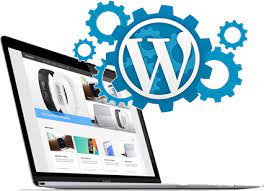In the digital age, optimising landing pages has become an essential approach for businesses trying to increase website traffic and conversions. A landing page that is well-designed and optimised can successfully draw visitors’ attention, engagement, and orientation towards desired activities. By mastering the art of landing page optimisation and choosing the proper hosting plans for your website, businesses can enhance their online exposure, attract niche audiences, and finally increase conversion rates. This article will look at five crucial methods for landing page optimisation that can hosting packages increase website traffic and help you maximise your online visibility and deliver measurable results.
Compelling and Clear Headlines:
Visitors will encounter your landing page’s title for the first time, thus it is essential to grab their attention right away. Create catchy headlines that express your product’s or service’s value proposition or offer. Include specific keywords that correspond with the search intent of your target audience while also optimising the page for search engines. A compelling headline piques interest and entices visitors to investigate deeper, boosting the likelihood that they will become active website users.
Visitors will see your landing page’s headline hosting packages for the first time, so it’s critical to capture their interest right immediately. Make catchy headlines that reflect the value proposition or offer of your product or service. Include specific keywords that correspond to your target audience’s search intent while also optimising the page for search engines. A great headline piques visitors’ curiosity and entices them to dig deeper, increasing the possibility that they will become active website users.
Persuasive and Relevant Content:
The content on your landing page needs to be persuasive, engaging, and relevant to the needs and interests of your target audience. While outlining the benefits and unique selling points of your product or service, speak to the needs hosting packages and desires of your target audience. Make the information scannable and simple to understand by using clear, convincing language, bullet points, and subheadings. By offering useful and pertinent material, you engage visitors and foster credibility and trust, which motivates them to explore more of your website.
Captivating Visual Elements:
The use of visual components is crucial in landing page optimisation for improved website traffic. Use captivating infographics, videos, and high-resolution pictures that are related to your product or service. Visuals have the power to captivate audiences, communicate ideas clearly, and arouse feelings. To stop people hosting packages from leaving your page owing to a slow load time, optimise your photos and videos. Also think about adding references, case studies, or social evidence in the form of ratings or reviews from customers. These components bolster credibility and foster a sense of trust, which motivates visitors to do the desired action.
Landing page optimisation is a continuous process that requires constant observation and review. A/B testing requires you to create multiple versions of your landing page and compare their efficacy. Experiment with different headlines, graphics, CTAs, and layouts to see what works best for your audience. Analyse data from programmes such as Google Analytics to learn about user behaviour, bounce rates, conversion rates, and other important metrics. Based on this data, make decisions, enhance the effectiveness of your landing pages, and progressively raise website traffic and conversion rates.
Streamlined Call-to-Action strategy:
To drive conversions and boost website traffic, a call-to-action (CTA) must be well-designed and visible. The CTA should be obvious, focused on taking action, and put in a key location on the landing page. Make the CTA stand out from hosting packages the rest of the page by using contrasting colours that draw the eye. The CTA’s language should be persuasive, precise, and communicate a sense of value or urgency. To make the CTA as effective as possible and motivate visitors to perform the intended action. Such as signing up for a newsletter, making a purchase, or seeking more information. Experiment with alternative phrasing, button designs, and positions.
A/B Testing and Data Analysis:
Landing page optimisation is a continual activity that necessitates regular observation and evaluation. Create many versions of your landing page and compare their effectiveness to do A/B testing. To find out what resonates most with your audience, experiment with different headlines, images, CTAs, and layouts. Analyse data from programmes like Google Analytics to gain insight into user behaviour. Bounce rates, conversion rates, and other crucial metrics. Make decisions based on this information, optimise the effectiveness of your landing pages. And gradually increase website traffic and conversion rates.
Website traffic and conversion rates can be hosting packages greatly impacted by strategically optimising landing pages. Businesses can develop landing pages that captivate visitors, promote exploration. And motivate desired actions by concentrating on appealing headlines, persuasive content, captivating imagery, simple CTAs, and data-driven research. Keep in mind that optimising landing pages is a continual process that calls for testing, evaluation, and constant improvement. You can increase your online visibility, draw in relevant traffic. And produce significant results for your organisation by putting these tactics into practise and embracing the art of landing page optimisation.
You may also like
-
Why Should Kochi Businesses Partner with a Zoho Expert?
-
Affordable Video Editing Services in Lahore to Boost Your Online Presence
-
Emerging Digital Marketing Trends You Can’t Ignore in 2025
-
Georgia Bulldog Tickets and Game Day Experiences
-
Add Me to Search Card – A Complete Guide to Boost Your Online Presence

